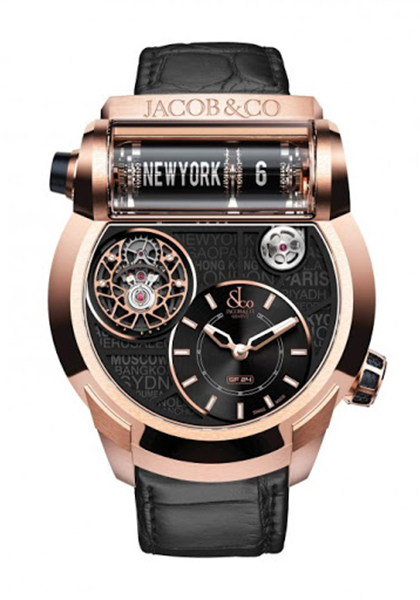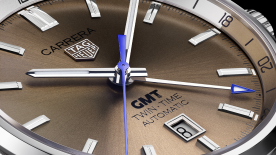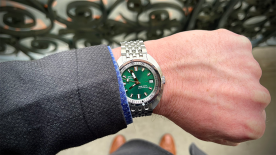I have had the pleasure of mentoring a bright young business student this year who had chosen the subject of watchmaking for his thesis. His pre-pandemic topic of “Digitalisation in the Watch Industry” turned out to be serendipitous as Covid forced the whole watch industry into digital overdrive. In his thesis, he had a whole chapter dedicated to Nonfungible Tokens (NFTs), which intrigued me.
Last Friday was the big day of his oral Bachelor presentation and as we were walking to the exam hall, I admitted that NFTs completely baffle me. He turned to me and whispered, “I don’t really get it either, please don’t quiz me too much on them”! We both laughed. And being a nice juror, I accidentally on purpose ignored the subject entirely.
But the conversation remained with me. It was obviously not my age that was preventing my understanding of this digital phenomenon if my 20-year-old business student was struggling too. So, I decided once and for all to try and get my head around the NFT, especially as they are starting to enter our beloved watch industry.
My main blockage was why on earth would someone pay a huge sum of money for a digital version of a watch? You can’t wear it, you can’t play with it, you can’t put it in your safe and admire it next to all your other pieces, you can’t show it off to friends and colleagues. So, what’s the appeal?
My research online was not particularly fruitful, as NFT terminology turns out to be just as complex as horological vocabulary, so I decided to go directly to the experts! Special thanks go to Marine Lemonnier from 289 Consulting, Carlos Moreira from WISeKey, and Jean-Claude Biver for sharing their knowledge with me.

One of the best examples to explain NFTs – at least for me – was the Opus NFT artwork by Beeple, a digital artist who created a different artwork every day for 5,000 days and put them all together into a digital collage. It was sold by Christie’s for $69.3 million.
The owner can’t hang it in his/her house as it measures metres across, but they can share it on social media, display it on a screen, even create a hologram out of it if they desire. And the advantage of owning it digitally is that they can always have it in their pocket, on their phone, ready to share.
We could almost turn the question around too: Why own a painting in one of your houses (let’s face it, the buyer has to have more than one property) if you rarely go there and rarely invite anyone over to admire your artwork?
The other important thing to note about NFTs is that they are registered by Blockchain, so they cannot be forged, duplicated, or stolen, and will last forever. This was not the case a few years ago with the old databases that could be hacked.
For NFT watches, things are a little more complicated because you wear a physical watch on your wrist, but what if you have hundreds of watches in your collection? You will never be able to wear more than one at a time, so why even own them at all if you could have them in NFT format, ready to share with friends at any moment in time on your phone?

A number of watch NFTs have already come up for auction, starting with the very first sale by Jean-Claude Biver, who sold a photograph of his prototype Hublot Bigger Bang All Black Tourbillon Chrono “Special Piece” that is in his private collection and not for sale. This kind of NFT is called a digital twin as there is also a physical object out there in the world, but most NFTs don’t have a physical reference, they only exist in the digital world.
Where watch-related NFTs really become fun is when you create an NFT of a watch that doesn’t actually exist, like Jacob & Co. did with their Epic SF24 travel watch, that instead of using cities, featured the names of crypto-currencies on its airport-style flaps.

Imagine all the complications you could design, the dials you could play with without having to worry about minimum and maximum tolerances. There would be no animals killed in the fabrication of your straps, and you could create cases that today would be impossible to realise.
Not to mention the NFT collections you could put together on your phone. And remember, you are the only true owner, thanks to Blockchain technology. Others can screenshot your Instagram photos, but that would be a bit like having a poster of the Mona Lisa!
One of the things that has helped the NFT craze is that NFTs can be bought with crypto-currency and there are a lot of people out there who have made themselves a small fortune with Bitcoin, Ethereum, and all the other crypto-currencies out there. It isn’t like you can walk into your high street bank and cash them in. So why not have some fun buying NFTs instead?
There is still debate about whether the NFT trend is here to stay and whether they are really worth the money, but one thing is for sure, it is important to understand them.
Staying in the digital world, At WorldTempus we have just launched our 2021 edition of the Watch Photo Awards with two themes. The first is “Freedom”, and the second is “Our Animal Friends”, where we invite you to take a photo of your watch (it has to be yours) and an animal (which doesn’t have to be yours). Maybe we’ll even make an NFT out of the winning photos so your pet can be immortalized forever, now there’s an idea!








